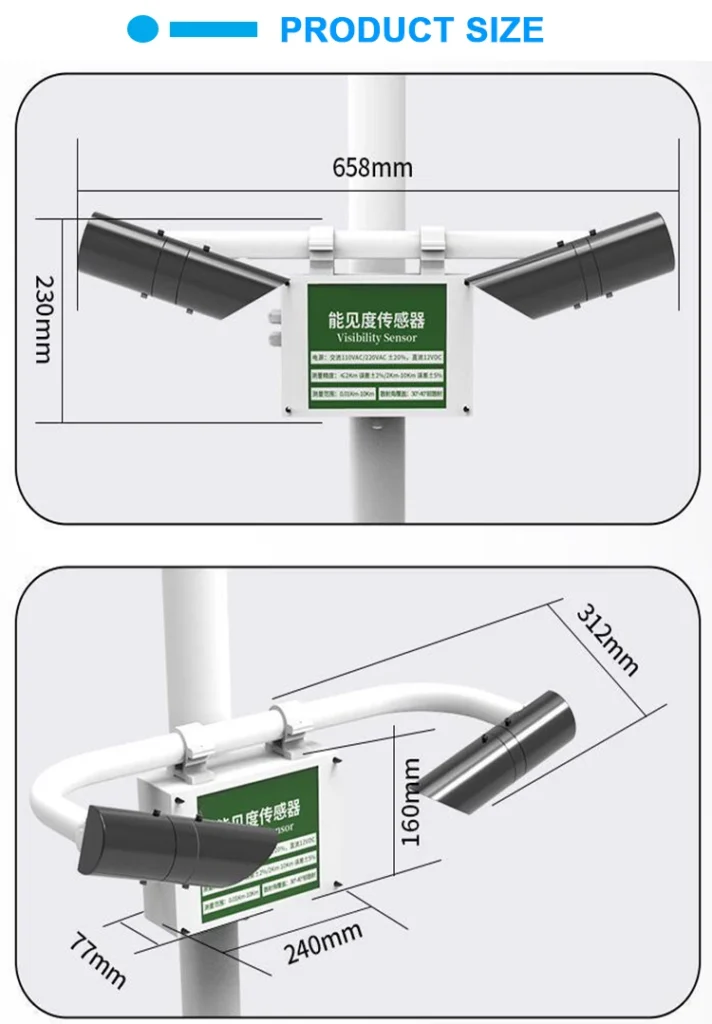How is visibility measured? Which instrument is utilized for measuring visibility?
We define visibility as the maximum distance at which we can clearly perceive and distinguish objects in the atmosphere. Particles such as fog, dust, smoke, or water droplets often impede this perception of distance. typically measure it in meters (m).Below are common methods and instruments used to measuring visibility.
Visual Method:
This involves estimating visibility by determining the farthest horizontal distance at which a person with normal vision can discern the outline of a target under current weather conditions. This manual approach is particularly prevalent in places like weather stations and airports, where staff observe and estimate visibility ranges using the naked eye.
Atmospheric Transmissometer:
In the realm of visibility measurement, there are several innovative devices, each with its unique approach. One such notable device operates in a rather specific and effective manner. This device evaluates atmospheric transmittance by emitting and capturing an infrared beam.
We center the principle behind its operation around the interaction of light with the atmosphere. As the infrared beam travels through the air, it encounters various particles and gases. Depending on the density and nature of these substances, the beam’s intensity changes.
Automatic Laser Visibility Meter:
Using laser scattering principles, this instrument calculates visibility by emitting a laser beam and analyzing the intensity of the scattered light from the beam’s return.
Visibility Sensors:
LIDAR:
This advanced instrument emits laser pulses and monitors their return time to measure particle concentration and distribution in the atmosphere. People know LIDAR for its accuracy over long distances and frequently employ it in airport weather monitoring.
Sight Meter:
Specifically designed for visibility measurement, a sight meter utilizes optical principles to gauge the farthest distance visible to the human eye. People commonly use it in ground-based meteorological observations and vehicle navigation systems.
The method or instrument chosen should align with specific application requirements. Some techniques demand specialized training and equipment to ensure precise results. It’s vital to select the appropriate approach for reliable visibility measurements. If you require additional assistance or in-depth guidance, we strongly suggest that you reach out to professional technical experts for advice.
